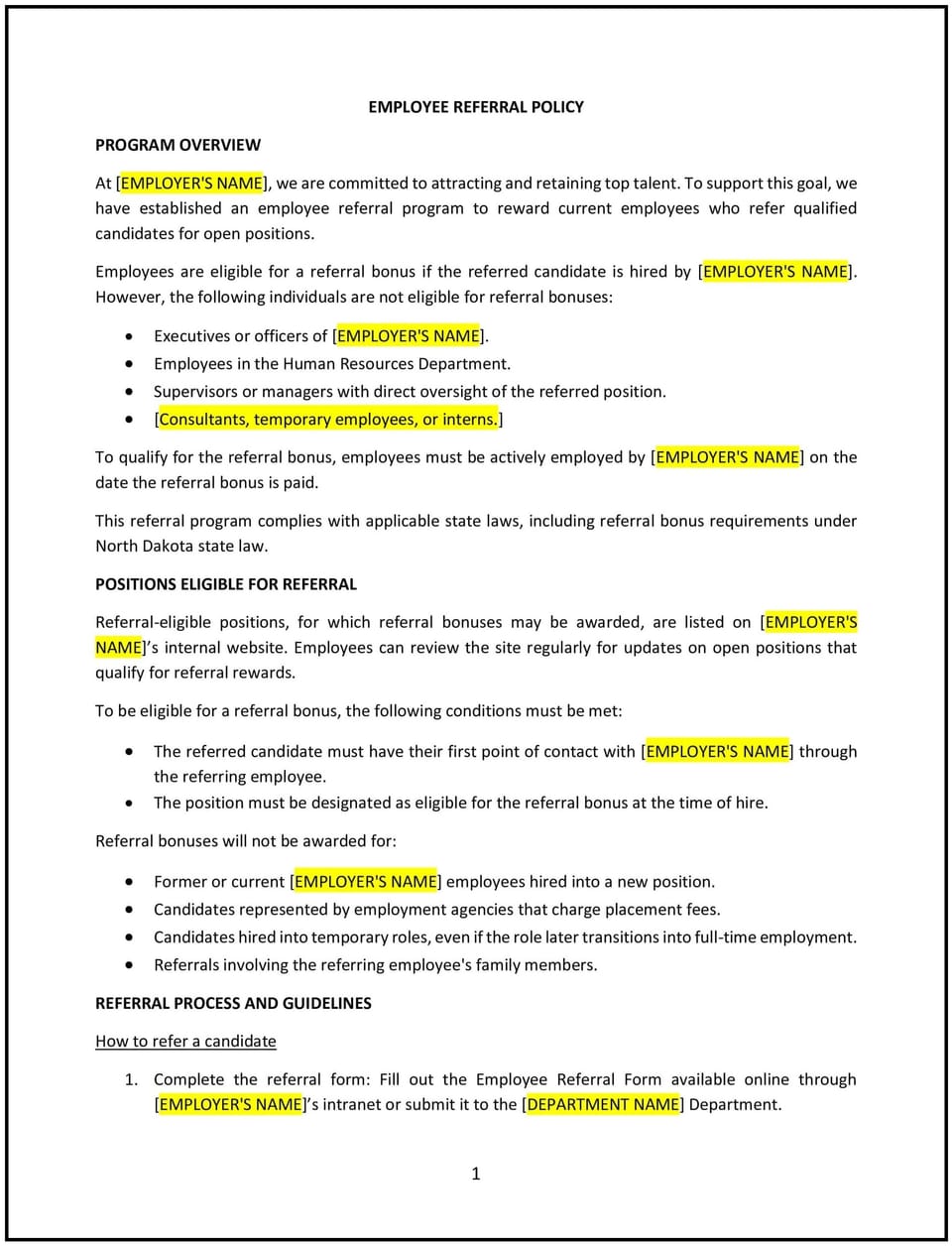Employee referral policy (North Dakota): Free template

Employee referral policy (North Dakota)
This employee referral policy is designed to help North Dakota businesses encourage current employees to refer qualified candidates for open positions. The policy outlines referral incentives, eligibility requirements, and payout structures to enhance talent acquisition.
By implementing this policy, businesses can attract top talent, reduce hiring costs, and increase employee engagement.
How to use this employee referral policy (North Dakota)
- Define referral program eligibility: Specify which employees can participate and whether leadership is excluded.
- Establish incentive structures: Offer bonuses, gift cards, or other rewards for successful referrals.
- Outline referral submission procedures: Require employees to submit referrals through a designated process.
- Set hiring and payout criteria: Determine when referral rewards are paid (e.g., after the new hire completes 90 days).
- Encourage diversity and inclusion: Promote referrals from diverse candidate pools.
- Communicate program details: Ensure employees understand the benefits and requirements of participation.
- Review regularly: Update the policy based on hiring needs and program effectiveness.
Benefits of using this employee referral policy (North Dakota)
Implementing this policy provides several advantages for North Dakota businesses:
- Reduces hiring costs: Lowers recruitment expenses compared to traditional hiring methods.
- Improves candidate quality: Increases the likelihood of hiring well-suited candidates.
- Enhances employee engagement: Rewards employees for contributing to company growth.
- Strengthens workplace culture: Encourages employees to bring in like-minded team members.
- Reflects North Dakota-specific considerations: Aligns with local workforce trends and hiring challenges.
Tips for using this employee referral policy (North Dakota)
- Offer meaningful incentives: Ensure referral rewards motivate employees to participate.
- Provide clear referral submission steps: Standardize the process for ease of use.
- Track referral success rates: Monitor program effectiveness and adjust incentives as needed.
- Promote the program regularly: Keep employees engaged through internal communication.
- Adjust as needed: Modify referral guidelines based on hiring needs and feedback.
Q: How much should businesses offer for successful referrals?
A: Businesses should determine competitive rewards based on industry norms.
Q: When are referral bonuses paid?
A: Businesses should specify whether bonuses are paid after a probationary period or upon hire.
Q: Can employees refer family members?
A: Businesses should clarify whether family members are eligible for referrals.
Q: What happens if multiple employees refer the same candidate?
A: Businesses should outline priority rules, such as rewarding the first referrer.
Q: How often should this policy be reviewed?
A: The policy should be reviewed annually or as hiring needs evolve.
This article contains general legal information and does not contain legal advice. Cobrief is not a law firm or a substitute for an attorney or law firm. The law is complex and changes often. For legal advice, please ask a lawyer.


